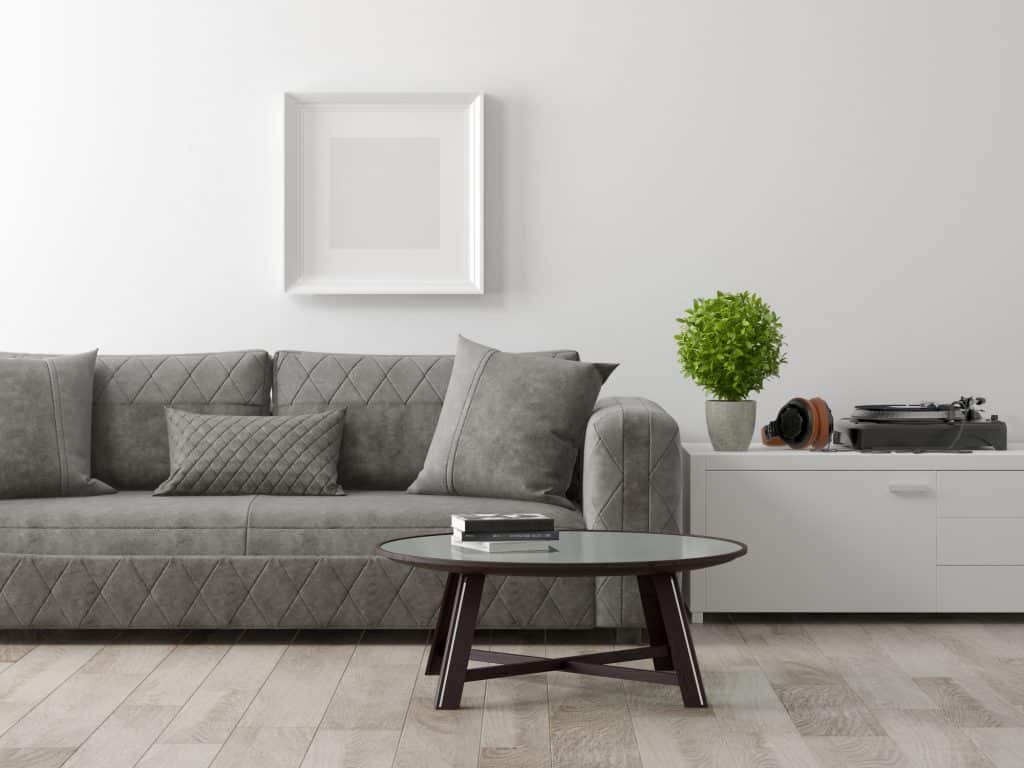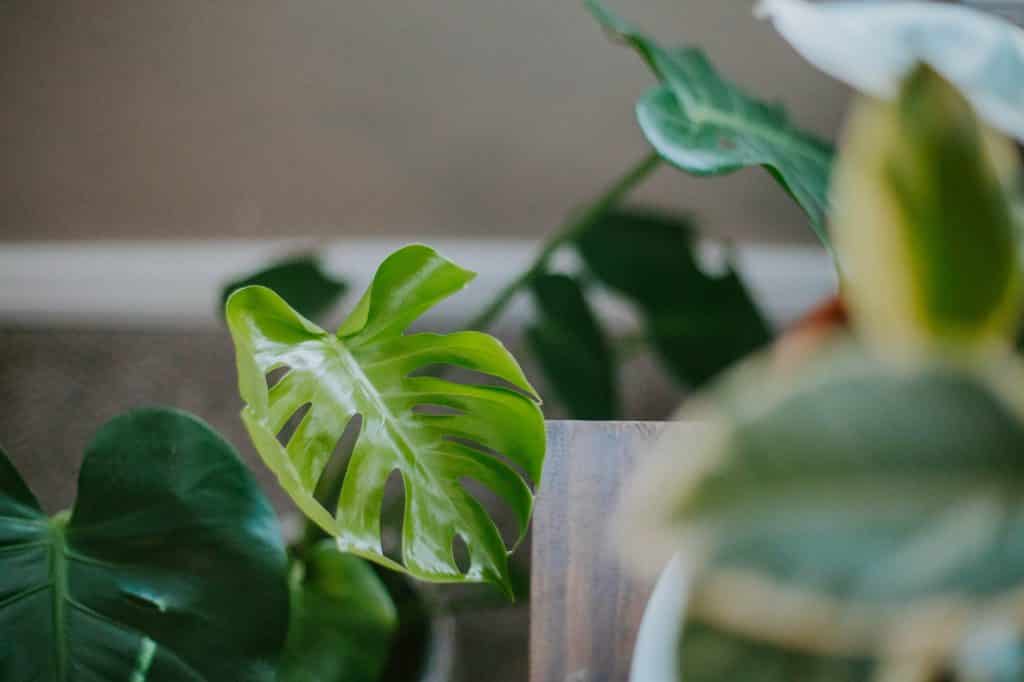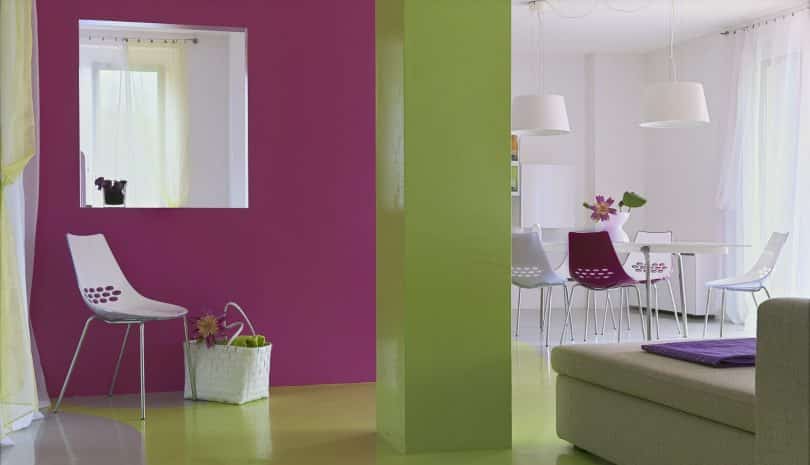Your home should be a space in which you feel calm, safe, and relaxed. If it isn’t, you can quickly feel overwhelmed because you don’t have anywhere to decompress from the stresses of work.
Perhaps unsurprisingly, interior design and mental health are closely related. After all, if you design your space around your needs then it’ll instantly feel more calming and secure.
Here’s how interior design affects mental health.

If you’re looking to start an interior design project, we recommend Canva as a great option to plan your interior design ideas. It comes with thousands of templates to get ideas from, including a mood board collage template.

Interior Design and Mental Health – An Organized Space
Although the concept of Feng Shui – Chinese mastery of space – has been twisted slightly by Western users, its base ideas remain true. In short, it teaches you how to achieve peace within a space by balancing its energy.
To many Western practitioners, this means the specific placement of objects around a room. But this isn’t what it really means. It relies on the Yin and Yang, which is the Chinese version of masculine and feminine energy. When you balance them correctly, your space will feel more peaceful.
But what does this have to do with interior design and mental health? Simply put, the teachings of Feng Shui can improve your mental health through logical interior design and orderly home management.
Similarly, various studies have been conducted on how interior design relates to mental health. They show that there are ways to design a space to make it happier and more livable, many of which are fairly obvious. For example, more plants and natural light were two of the main takeaways.
So, how do you use environmental psychology and interior design to make your home a more mentally healthy place? Here are some of the most important tips.
1. Make sure it’s clutter-free
An important interior design element you’ll find in Feng Shui is making sure your home is free from clutter. You might have heard the phrase, “tidy house, tidy mind.” While it sounds a bit cliché, it really is true.
Along with the physical clutter creating mental clutter, messes stress you out. You constantly think about tidying them up, and the longer it sits there, the more stressful it is.
Design rooms with storage in mind so it never gets to that point. Sure, we all have off days where we don’t want to tidy, but if everything has a clear and logical home, it takes minimal effort to actually put it away.
2. Use color theory
Color theory is a key element in interior design and its importance can’t be overstated. It’s one thing to choose a color scheme you like, but another thing entirely to choose colors that boost your mood.
Bright, light colors denote happiness, and pastel shades can do wonders for uplifting your mood. Some important ones include:
- Yellow
- Peach
- Lilac
- Lavender
- Orange
- Red
Keep the shade light; dark reds and oranges can feel warm and cozy but not uplifting.
This branch of color theory is most important in the bedroom, as this is where you’ll wake up every day. That said, you can use this logic throughout the rest of your home. For example, a living room should feel bright and energetic, so something like orange is a good choice.

3. Add plants
The link between plants and mental health is well documented. They’ve been shown to brighten moods and reduce stress. What’s more, caring for houseplants forces you to put aside your mood and focus on something else.
Plants are a key aspect of interior design because they make the perfect finishing touch for almost every room. If you don’t think you can care for a plant, buy a fake one (or a really hard real one like a ZZ plant).
While fake plants might not have the same health benefits as real ones, they will trick your mind enough to lift your mood. Simply seeing some green can do a lot for your wellbeing.
4. Act like someone else lives there
This is less of an interior design tip, but it’s great for your mental health when at home. Act as if someone else lives with you or is coming to visit. In essence, they should feel like a guest.
Thinking this way will force you to keep things tidy and assess your interior design choices. For example, if you live alone and design your living room for one person, how will it function when you have guests?
While interior design should focus on the user first, it’s important to consider others when designing a space. Even if it’s as simple as making sure all chairs around a table are accessible, it’ll change your way of approaching interior design.
The Mental Health Benefits of a Hobby
Designing a space to improve your mental health is just one side of the equation. Turning interior design into a hobby is another great way of reducing the symptoms of mental health problems.
In the simplest terms, a hobby is something you do for fun that’s not related to your paid job. Therefore, its connection to improved mental health should be obvious.
A hobby gives you a chance to switch off from things that can be stressful and to focus on something completely optional and whose outcome, in a sense, really doesn’t matter.
This should be a clear connection between interior design and mental health. Planning a design project takes critical thought and creativity, decorating takes commitment, and finishing it off takes a keen eye.
And that’s not even considering the more crafty elements of interior design, which could be a hobby in itself. Designing and making your own accessories and finishing pieces can give you a real sense of achievement that you might struggle to find elsewhere.
So, if you need a hobby that’s both creative and structured, interior design could be the one for you.

Conclusion
Hopefully this article has shown you how interior design affects mental health. From a practical perspective, designing your home to work around you reduces stress and will make you feel happier.
Then there’s the hobby aspect, which is one of the easiest ways to decompress from everyday life.
Luckily, interior design is really easy to pick up. All you need is ideas!







